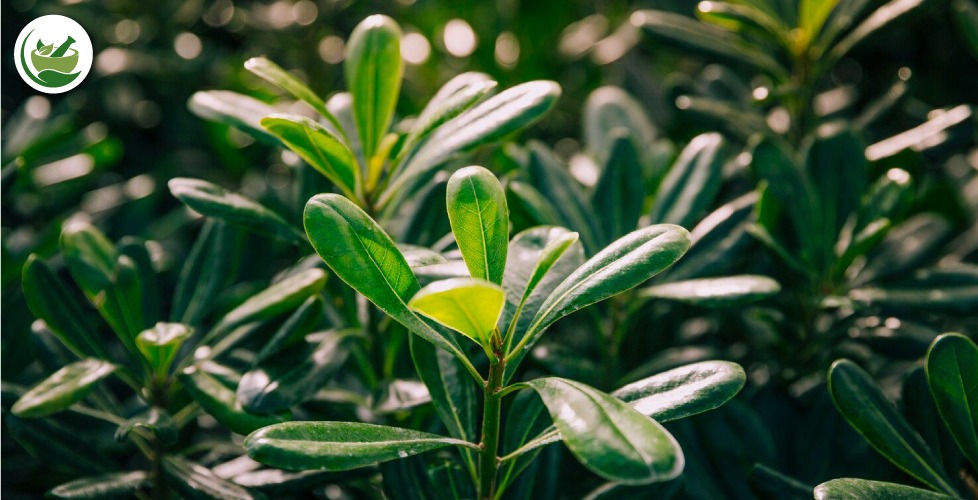
The Fragrant Tea Olive Shrub, scientifically known as Osmanthus fragrans, stands out as a beacon of beauty and aroma in the garden. This evergreen gem, cherished by garden enthusiasts worldwide, offers not only a visual feast with its glossy green leaves but also a sensory delight with its sweet, apricot-scented blossoms. Flourishing in a variety of settings, from the solitude of a specimen plant to the camaraderie of a hedge, the Fragrant Tea Olive’s versatility makes it a prized addition to any landscape. Its ability to adapt and thrive in a range of conditions underscores its appeal, inviting gardeners to explore its charm and utility in their own green spaces.
Understanding Fragrant Tea Olive Shrub
Originating from Asia, the Fragrant Tea Olive Shrub has graced gardens for centuries, embodying elegance and resilience.
Physical Characteristics
This evergreen shrub, reaching heights of 10 to 30 feet with an equal spread, showcases dense, dark green foliage that serves as a year-round backdrop for its true glory—the fragrant flowers.
Flowering Season
These tiny, yet potent, blooms appear in waves from fall to spring, emitting a sweet fragrance that can fill an entire garden.
Varieties
The Fragrant Tea Olive comes in several varieties, each with its own unique charm.
Osmanthus fragrans, ‘Aurantiacus’
Varieties such as the Osmanthus fragrans ‘Aurantiacus’ dazzle with orange blossoms.
Osmanthus fragrans, ‘Fudingzhu’
The Osmanthus fragrans ‘Fudingzhu’ is known for its profuse white flowers that do not disappoint the olfactory senses.
Differences among Varieties
Differences among varieties extend to their growth habits, leaf shapes, and bloom colors, allowing gardeners to select the perfect match for their landscape aesthetics and functional needs.
Cultivation of Fragrant Tea Olives
Site Selection
Choosing the right location is paramount for the thriving of a fragrant tea olive shrub. These plants prefer full to partial sun exposure, though they can tolerate some shade. Light conditions significantly influence their flowering; more sunlight typically leads to more abundant blooms. The ideal soil is well-draining and rich in organic matter, with a slightly acidic to neutral pH. When selecting a site, consider the mature size of the shrub to avoid overcrowding and minimize the need for future transplants.
Planting Guidelines
The best time to plant Fragrant Tea Olive is during the cooler months of fall or early spring, allowing the plant to establish roots without the stress of extreme heat. When planting, make sure the hole is twice the width and only as deep as the root ball. This provides ample room for the roots to expand into the surrounding soil. Space multiple shrubs at least 6 to 10 feet apart, depending on the variety’s mature size, to allow for growth and air circulation.
Watering and nutrition
Initially, Fragrant Tea Olive requires regular watering to establish a strong root system. Once established, it is quite drought-tolerant, though occasional deep watering during extended dry periods promotes health and flowering. A balanced, slow-release fertilizer applied in early spring can support robust growth and blooming. However, avoid over-fertilization, which can lead to lush foliage at the expense of flowers.
Care and maintenance!
Pruning Techniques
Pruning is not strictly necessary for the health of the Fragrant Tea Olive, but it can help maintain a desired shape and size. Prune in late winter or early spring before the onset of new growth. This timing allows you to shape the plant without sacrificing blooms, as the flowers emerge on old wood. Remove any dead, damaged, or crossing branches to encourage healthy growth and air circulation.
Pest and disease management
Fragrant tea olive is relatively pest- and disease-resistant. However, it can occasionally be affected by scale insects or sooty mold. These can be managed with horticultural oil or insecticidal soap, applied according to label instructions. Maintaining proper spacing and air flow around the plants can help prevent these issues.
Winter Care
In cooler climates, Fragrant Tea Olive may need protection from frost. Although the plant is hardy in USDA zones 7 through 10, sudden frosts can damage tender blooms. Mulching around the base can help insulate the roots, and a burlap wrap around the shrub can provide additional protection from severe cold.
Uses of Fragrant Tea Olive in Landscaping and Gardens
Aesthetic Appeal
With its lush foliage and sweet-smelling flowers, the Fragrant Tea Olive is a standout choice for any garden. It can serve as an elegant hedge, a serene backdrop for other flowering plants, or a stunning specimen plant. Its dense growth habit also makes it an excellent choice for privacy screens or as a windbreak.
Fragrance and Wildlife Attraction
The intoxicating fragrance of the tea olive blooms is not only a treat for humans but also attracts pollinators such as bees and butterflies to the garden. Planting it near windows or walkways can allow you to enjoy its scent both outdoors and indoors.
Companion Planting Ideas
Fragrant tea olive pairs well with other plants that require similar growing conditions. Consider planting it alongside azaleas, camellias, or rhododendrons, which thrive in slightly acidic soil. Its understated greenery also complements the vibrant blooms of perennial flowers, creating a harmonious landscape design.
Conclusion
The Fragrant Tea Olive Shrub is a versatile and valuable addition to any garden, offering year-round beauty and a delightful fragrance. With proper cultivation and care, it can provide enjoyment for years to come. Whether you’re drawn to its aesthetic appeal, its sweet scent, or its ability to attract wildlife, the Fragrant Tea Olive can fulfill various roles in your garden design.
Read more blogs on the health benefits of olive-leaf tea
FAQ’s
How long does it take for a fragrant tea olive to bloom?
Fragrant Tea Olive shrubs typically begin to bloom within two to three years after planting, depending on their size at the time of planting and growing conditions. Once established, they bloom prolifically from fall through spring.
Can Fragrant Tea Olive be grown in pots?
Yes, Fragrant Tea Olive can be successfully grown in pots or containers. Select a big container with holes for drainage and use a clean planting mix. Container-grown plants will need more frequent watering and fertilization than those planted in the ground.
How often should I water my Fragrant Tea Olive?
Water newly planted Fragrant tea olive shrubs are planted regularly to keep the soil moist but not waterlogged. Once established, they are quite drought-tolerant, but they will benefit from occasional deep watering during prolonged dry spells, especially in hot climates.
Does Fragrant Tea Olive require full sun?
Fragrant Tea Olive performs best in full sun to partial shade. While it can tolerate some shade, too little sunlight may reduce the number of blooms. Ideally, provide it with at least four hours of direct sunlight each day for optimal growth and flowering.
Can Fragrant Tea Olive be used as a hedge?
Yes, Fragrant Tea Olive makes an excellent hedge due to its dense growth habit and the height it can achieve. Plant shrubs 6 to 10 feet apart, depending on the desired thickness of the hedge and the specific variety. Pruning on a regular basis will help to preserve the ideal form and density.
What companion plants go well with Fragrant Tea Olive?
Companion plants that thrive in similar soil conditions and light requirements make good neighbors for Fragrant Tea Olive. Consider pairing it with azaleas, camellias, hydrangeas, or rhododendrons. These combinations can create a visually appealing and harmonious garden design.
Call to Action
Have you grown Fragrant Tea Olive in your garden? Share your experiences and tips with fellow gardening enthusiasts in the comments below. For more insights into gardening and landscape design, subscribe to our blog and join our community of plant lovers. Let’s grow together!






